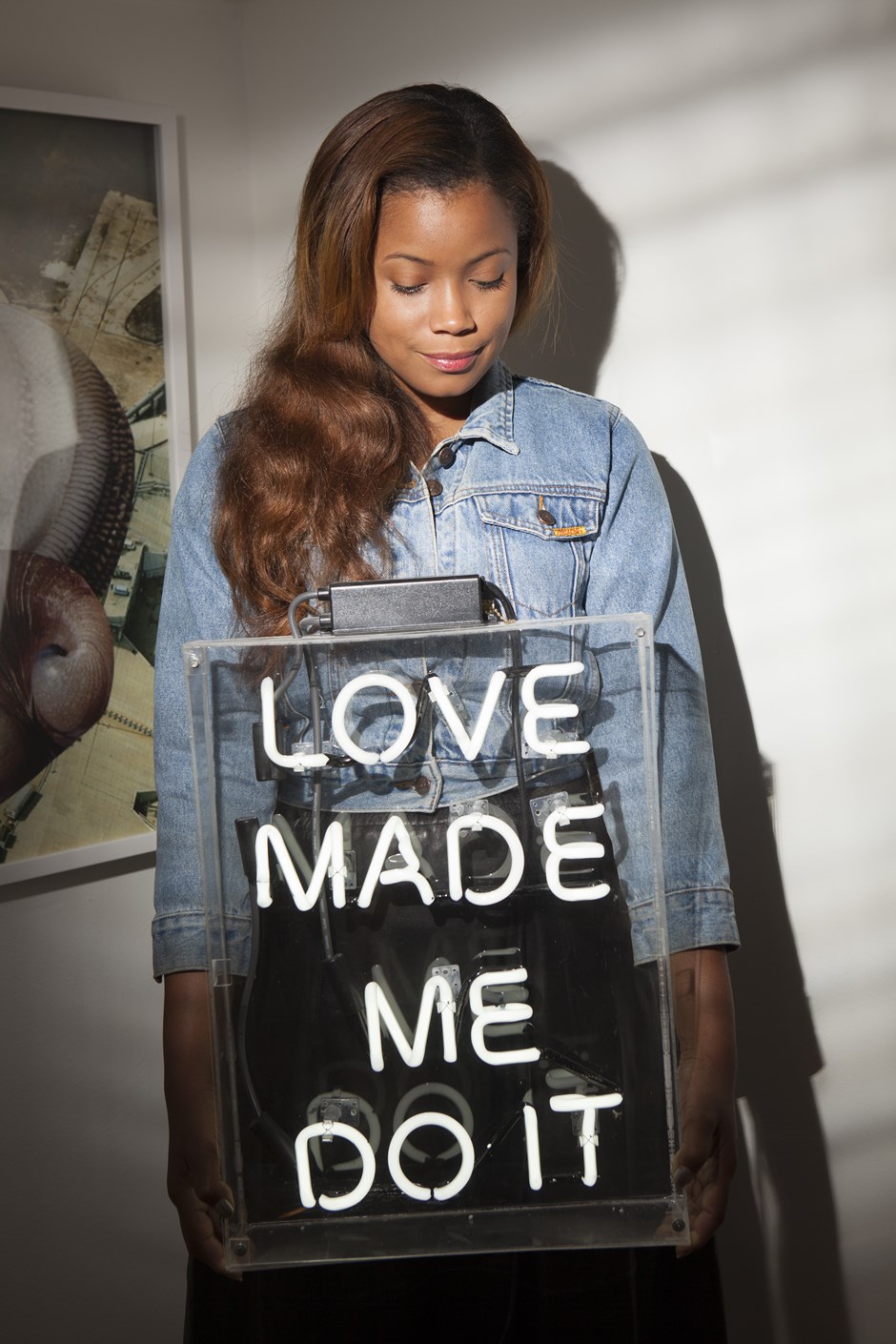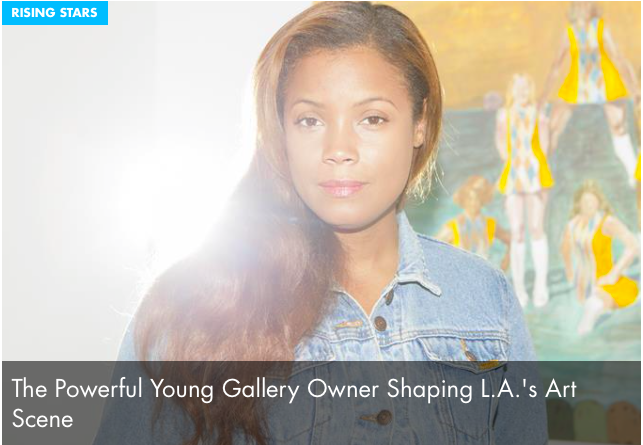OZY featured me under there Rising Stars column!!!!
Boy, can artist Derek Fordjour remember the first time he met Michelle Papillion. They were in a room full of big names and up-and-comers at the estate of a very important Black artist. Papillion stood up in her purple pants and great shoes and proclaimed: “I run a gallery in the hood.”
Since then, Papillion’s gallery has shifted quarters, but not too far, and today you can find it below a neon sign — PAPILLION, it spells, in flamingo-pink capitals — in Leimert Park, Los Angeles. Nearby, there’s Jamaican food, African-style silhouette murals and a whole lot of dudes drumming in the parking lot for a Friday afternoon. Maybe it’s an unlikely birthplace for the next great renaissance of African-American art. Or maybe it’s the perfect one. Whatever the case, Papillion’s ambitions recall nothing less than the Harlem of 90 years ago. Her shows, which feature the work of Black artists on the rise, already draw some of the most powerful collectors in the world. “We’re in the beginning of it,” she tells me when I visit.
She looks weirdly fashionable in her oversize gray hoodie, hoop earrings, black pants and all black sneakers — even the Reading Rainbow mug she’s clutching seems somehow cool. Papillion isn’t the only reason that New York and London bigwigs like Jeffrey Deitch and Jay Jopling have come calling on the L.A. art scene, of course. Los Angeles looks a lot more like Brooklyn nowadays, with artists going at giant canvases in abandoned warehouses and an accompanying gentrification. But art in the City of Angels has a different kind of aesthetic — bigger pieces, bolder colors, outdoor installations — and a more inclusive, less elitist vibe. “People need to feel comfortable in this environment,” Papillion says.

To me, Papillion’s gallery recalls W.E.B. DuBois’ dream for Black drama: It would be by, for and near African-Americans — though it’d be inaccurate to suggest that Papillion is only for Black audiences. Visitors are greeted by one of Fordjour’s canvases, featuring faceless Black men lined up as targets in a carnival game. Two panels of a Black man at an ATM cover an entire wall of Papillion’s office; it’s the work of Haitian-born, New York–raised, L.A.–based artist Andy Robert. A collage of magazine photos by Suné Woods (formerly a photographer), stressed and manipulated, hangs with a texture like overlapping tissue papers. “Curatorially she’s doing all mediums,” Shelley Holcomb, cofounder of Curate L.A., says, with “really young artists that are subsequently gaining attention internationally.” Indeed, the day I visit, she’s just met with a couple of collectors from Tokyo.
In some ways, Papillion’s work runs parallel to that of Theaster Gates, the South Side Chicago revitalist, in whose property she made that declaration about the gallery in the hood. Making the space around her beautiful is Papillion’s art project. “There are no galleries on this side of town owned by people of color. Period.” To do good for a community is an art in and of itself, she says. And there’s much good to be done in Leimert Park, a predominantly Black neighborhood with the second-highest property crime rate in the city, according to the Los Angeles Times.
Papillion is protective, even possessive, of the dozen Black artists she’s shepherded to wider renown. Sometimes she is downright political. In Artforum, in the pages where owners typically advertise upcoming exhibitions, she took out an ad that said, “Dear Art World, Let’s End Police Terrorism #blacklivesmatter.” Last Martin Luther King Jr. Day, Papillion underwrote a colorful float, designed by one of her artists, to represent the Crenshaw neighborhood, near Leimert Park. One of the sayings plastered on it was “Black money matters.” It’s rare of a gallerist to be that explicit — and loud — about her politics.
But activism was in the water she drank, growing up in Oakland. Her mom was an educator, and her dad an architect. At Howard, she studied the classics at first, learning Latin, Greek and Egyptian (yes, she can read all three and waves off my impressed expression). She joined an Egyptian art class, and in terms of falling in love with visual arts, that was “the tip of an iceberg for me,” she says.
It’s not easygoing, of course. Finding emerging artists is like winning the lottery, and turning unknowns into collectors’ darlings takes an eye, nurturing, skill, advocating, branding — as well as time and justice. Of the 10 people on the Most Powerful Art Dealers list that Forbes put out in 2012, none were women of color. But Papillion, has already come far, says Fordjour, who remembers coming up with her: “We were all at this scrappy space at the same time,” he says. Things have changed: “Now people know her name when she comes into the room, and that’s a different way to advocate.”
